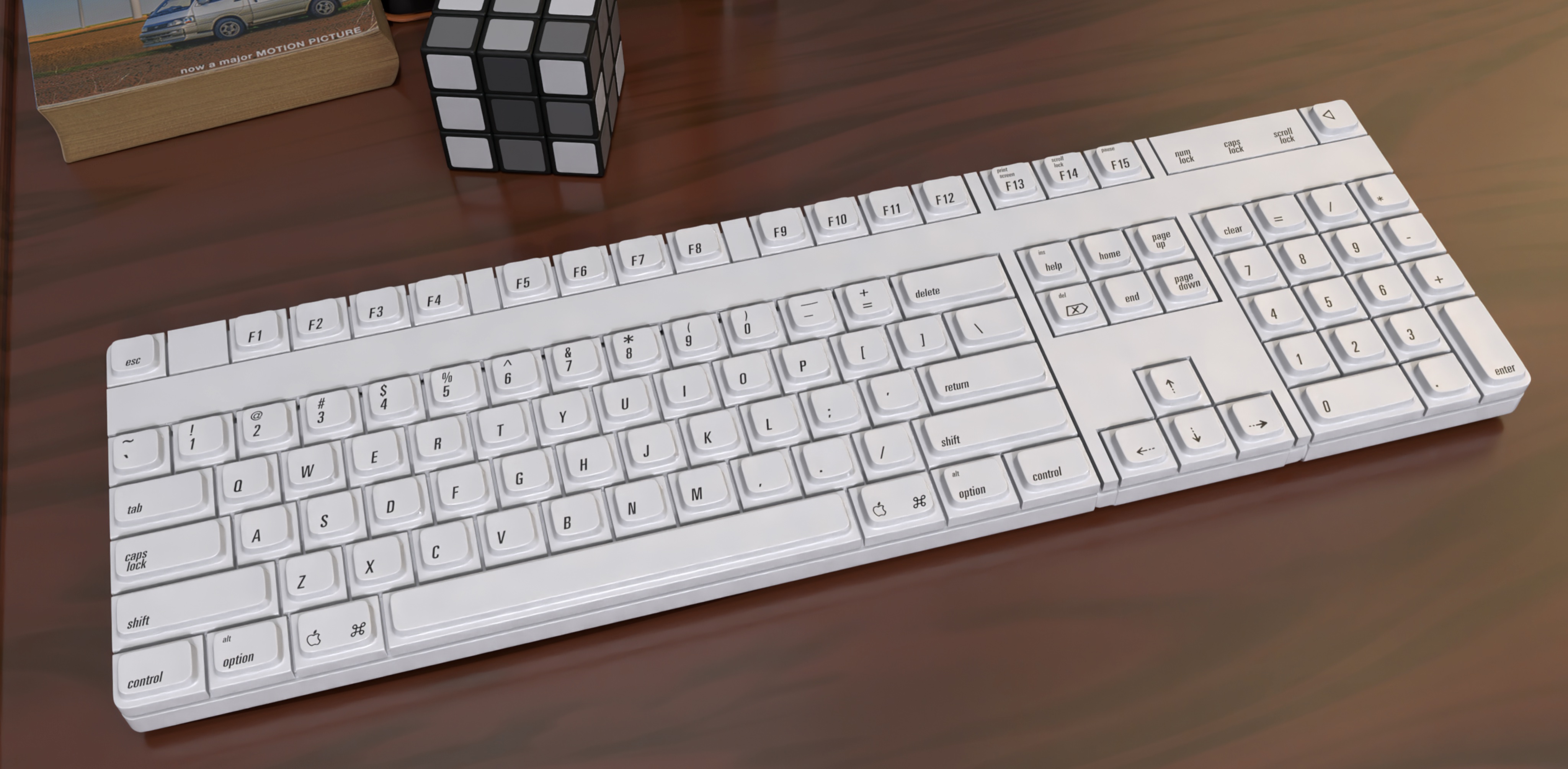The cursed universes of Dana Sibera
The Kickstarter for Shift Happens still has 10 days to go.
Please help us get to $700,000 and unlock a free nice colorful third-volume for everyone by backing and spreading the word!
And now for something completely different…
⌘
At first, Dana Sibera’s explorations might feel like just strange hypotheticals, visual madlibs, bored evenings in Photoshop. Here’s one example. A Mac IIsi made of marble. Why not?
 Macintosh IIsi in marble
· Source · This and the following captions come from the original posts by Sibera
Macintosh IIsi in marble
· Source · This and the following captions come from the original posts by Sibera
A “landscape” PowerBook G4? Sure.
 The Landscape PowerBook G4 joined the G4 Cube as a one-off classic in the early 2000s. Well-kept examples fetch high prices on eBay. · Source
The Landscape PowerBook G4 joined the G4 Cube as a one-off classic in the early 2000s. Well-kept examples fetch high prices on eBay. · Source
A Zip drive, get it?
 Zip drive · Source
Zip drive · Source
The #1 adjective others seem to put under her creations routinely and casually shared on Mastodon is cursed. Sibera seems to think likewise. “They are terrible for the most part, but better out of my head than in,” she wrote when I asked.
And sure, there are some truly cursed objects in Sibera’s collection:
 Dual USB-C Source
Dual USB-C Source
 5.5MB Fast Page Mode DRAM LIMM. The release of 90 degree LIMMs was lauded as a boon for ease of installation, after years of difficulty with 120 degree modules. · Source
5.5MB Fast Page Mode DRAM LIMM. The release of 90 degree LIMMs was lauded as a boon for ease of installation, after years of difficulty with 120 degree modules. · Source
 iMac with Light Emitting Resistor Display · Source
iMac with Light Emitting Resistor Display · Source
But the more you look at those strange concoctions, the more they are hinting at fascinating alternate universes that perhaps aren’t cursed at all.
Maybe there’s a parallel world where the design team at Apple decided that Newton should follow the same visual cues as the older, bigger machines:
 Newton MessagePad 2000 in classic Mac slightly yellowed platinum · Source
Newton MessagePad 2000 in classic Mac slightly yellowed platinum · Source
Or a universe where PowerBook got to reuse Macintosh Portable’s styling:
 Macintosh PowerPortable, with touchbar · Source
Macintosh PowerPortable, with touchbar · Source
Or one where, some time later, early PowerBook livery got to continue well into the MacBook Air era:
 Offspring of a PowerBook 100 and MacBook Air · Source
Offspring of a PowerBook 100 and MacBook Air · Source
Maybe “foldables” don’t have to refer exclusively to phones?
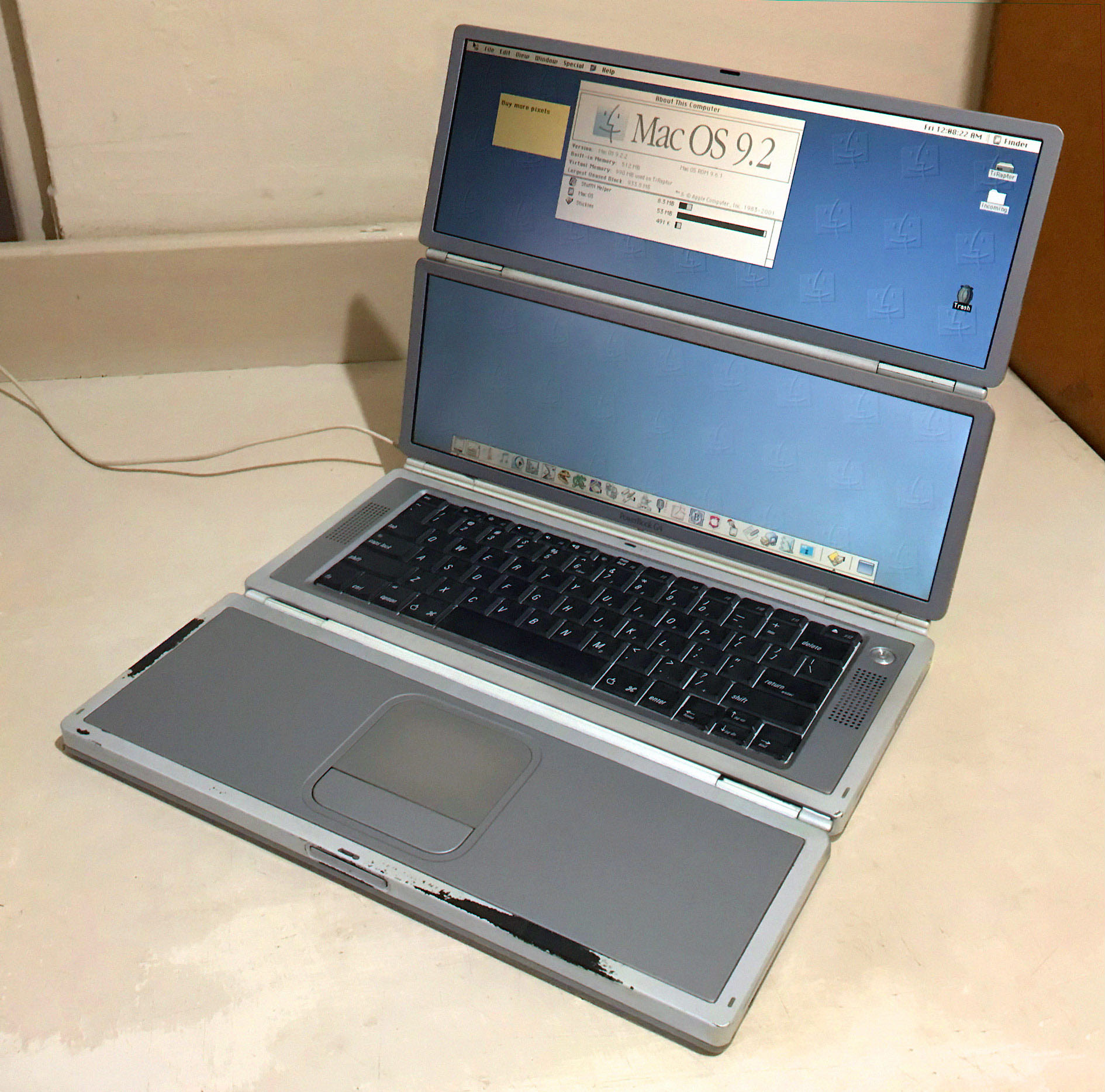 The Titanium Powerbook G4 W’s unique W-Folding mechanism made it just plain weird. Look at it. · Source
The Titanium Powerbook G4 W’s unique W-Folding mechanism made it just plain weird. Look at it. · Source
Maybe the Apple 20th Anniversary Mac could have been released three years earlier?
 Apple Seventeenth Anniversary Macintosh. Of all the machines that have visited me from those nowhere places, this is the one I desire the most
Apple Seventeenth Anniversary Macintosh. Of all the machines that have visited me from those nowhere places, this is the one I desire the most
Or Apple’s 16-bit version of a “keyboard computer,” a form factor so popular in the 1980s, could have actually happened?
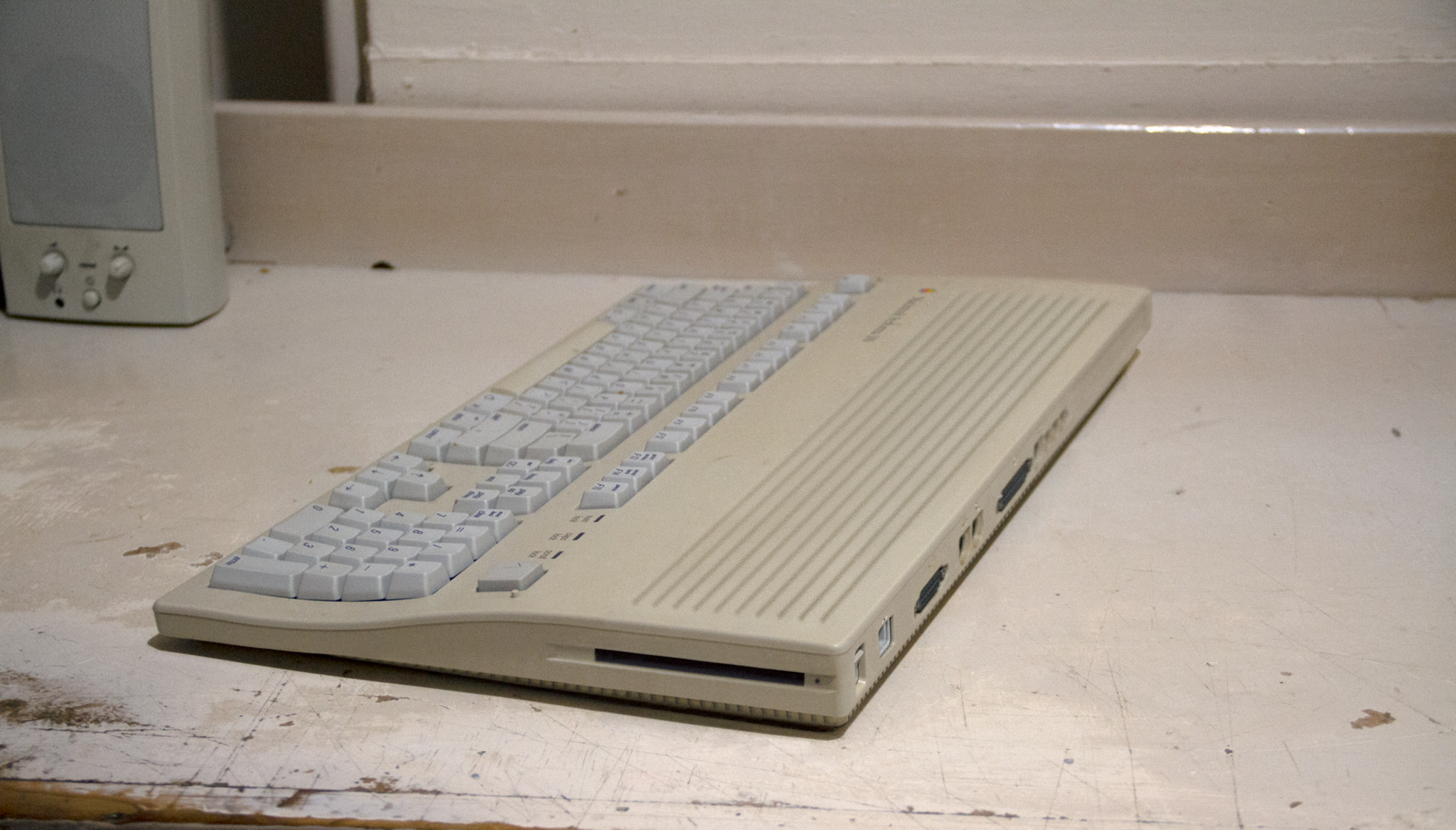 The Macintosh Performa 110 was received poorly on release due to limited internal expandability, but just months later a speed bump to a 50Mhz 68030 and 24-bit colour at 832x624 cemented it as the most popular all-in-one classic gaming Mac · Source
The Macintosh Performa 110 was received poorly on release due to limited internal expandability, but just months later a speed bump to a 50Mhz 68030 and 24-bit colour at 832x624 cemented it as the most popular all-in-one classic gaming Mac · Source
Some of those explorations are beautiful and enthralling, like this imaginary IBM PC 5150 in a tower case that matches the angular visual language of the rest of the machine’s components:
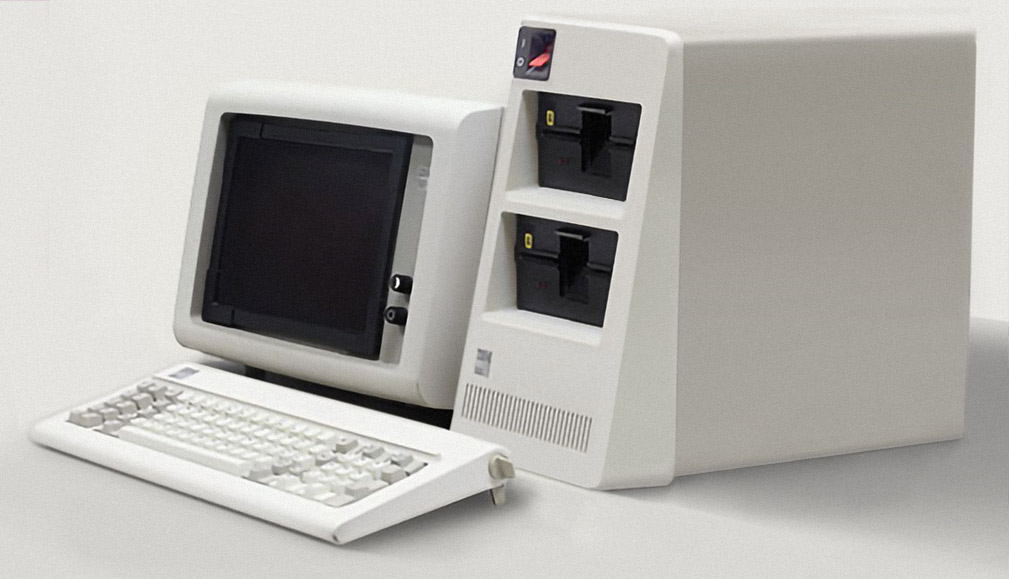 IBM 5150T · Source
IBM 5150T · Source
Or, lastly, the handsome NeXTbook – a NeXT laptop we never got to see, complete with a thoughtful set of arrow keys:
 NeXTbook Turbo Color · Source
NeXTbook Turbo Color · Source
⌘
Some of the images might be cursed, but one of the enduring qualities of Sibera’s work is also how clever a lot of it feels.
I like when she pokes fun at Apple’s (and design as a whole’s) pretentiousness…
 Power Macintosh 9500/180MP · Source
Power Macintosh 9500/180MP · Source
…or cheapness, visible for example in reusing the same keyboard component in laptops…
 30” PowerBook G4 · Source
30” PowerBook G4 · Source
…comments on some, ekhm, unpopular design decisions…
 “Perfection”
“Perfection”
…or revisits some troubled moments in company’s history…
 PowerBook G5 · Source
PowerBook G5 · Source
These “mock-ups that mock” all feel great to me, a perfect antidote to the pretentious Jonny Ive white-room videos of the previous decade.
And where fun and cleverness intersect is where things get really interesting. Early “What You See Is What You Get” computers from Xerox had screens based on pieces of paper, so it stands to reason one could imagine an alternate timeline where we just kept doing that:
 PowerBook 190p - 33Mhz 68LC040 with 640x870 active matrix greyscale portrait display. · Source
PowerBook 190p - 33Mhz 68LC040 with 640x870 active matrix greyscale portrait display. · Source
This iPod Micro is a great commentary on both the longevity of arrow keys and perhaps the fact that sometimes creativity can be… overrated. I mean, wouldn’t you actually want this? Wouldn’t this have been better than the tiny click wheel?
 iPod Micro · Source
iPod Micro · Source
This mock-up below is obviously a joke, but in the 1980s, as electric typewriter manufacturers fought for survival in the world suddenly filled with home and office computers, there was at least one device that looked pretty much like this:
 Apple PowerColorStylewriter 2284 · Source
Apple PowerColorStylewriter 2284 · Source
This hypothetical CRT iMac is extra funny if you know of what eMac was:
 The 27” iMac CRT was lighter than you’d expect, but the reach to the rear USB ports was killer. · Source
The 27” iMac CRT was lighter than you’d expect, but the reach to the rear USB ports was killer. · Source
This is cute, sure, but if you ever wanted to play Wolfenstein 3D or Duke Nukem 3D on a computer that wasn’t capable enough, you will recognize this pattern immediately:
 Canon Innova Book 10C, your peephole to the Information Superhighway. · Source
Canon Innova Book 10C, your peephole to the Information Superhighway. · Source
And, this is hilarious on its own, but doubly so if you know anything about time-sharing or the 1970s IBM computers that split one screen between two users.
 The PowerBook 150s, designed to be used by two students at once in collaborative edu environments, was the last release of the PowerBook 100 line, and soon found to be more powerful than expected. Its unique ability to run two separate OS instances made it popular with sysadmins. · Source
The PowerBook 150s, designed to be used by two students at once in collaborative edu environments, was the last release of the PowerBook 100 line, and soon found to be more powerful than expected. Its unique ability to run two separate OS instances made it popular with sysadmins. · Source
⌘
Hidden within these photoshops (and occasionally renders) are great observations about how the world of technology actually functions.
An Apple Watch running Mac OS reminds us how many debates raged inside Apple about exactly what operating system should power iPhone and then Apple Watch – and how calling it “Mac OS X” early on was pretty confusing:
 Apple Watch with Mac OS 9 and 640x870 colour portrait display · Source
Apple Watch with Mac OS 9 and 640x870 colour portrait display · Source
This strange mock-up is not a Model M with a CRT…

…it’s an iMac! It’s an iMac if iMac was built at a very specific moment of time by a specific group of people working at Apple’s chief competitor, IBM. (In order words: it’s not about the idea, it’s about its execution.)
And this is really what your iPhone keyboard looks under the hood – the letter keys enlarging and shrinking themselves quietly and invisibly to accommodate your fingers:
 Apple KeyChange Keyboard, English version. All versions of this innovative keyboard have keys resized to approximate their frequency of use in the keyboard’s language, allowing for smoother and more accurate typing. · Source
Apple KeyChange Keyboard, English version. All versions of this innovative keyboard have keys resized to approximate their frequency of use in the keyboard’s language, allowing for smoother and more accurate typing. · Source
The explorations are fascinating because they’re a peek behind the curtain. You know a lot of these actually existed: maybe as ideas in people’s heads, sketches in designers’ notebooks, or as prototypes destroyed without ever being seen in public.
The beauty of Sibera’s posts (and something I am utterly ruining in this newsletter) is that they are not presented as “gee, I wonder what would a PowerBook G5 look like.” No, the descriptions appear as if the products actually existed – literal fake news – with realistic product names thrown in for good measure. (I encourage you to click through to the posts to see people’s reactions!)
Because you just know Apple wanted to release a 17” G3 notebook and you will know forever be annoyed that some part of our multiverse got to enjoy it:
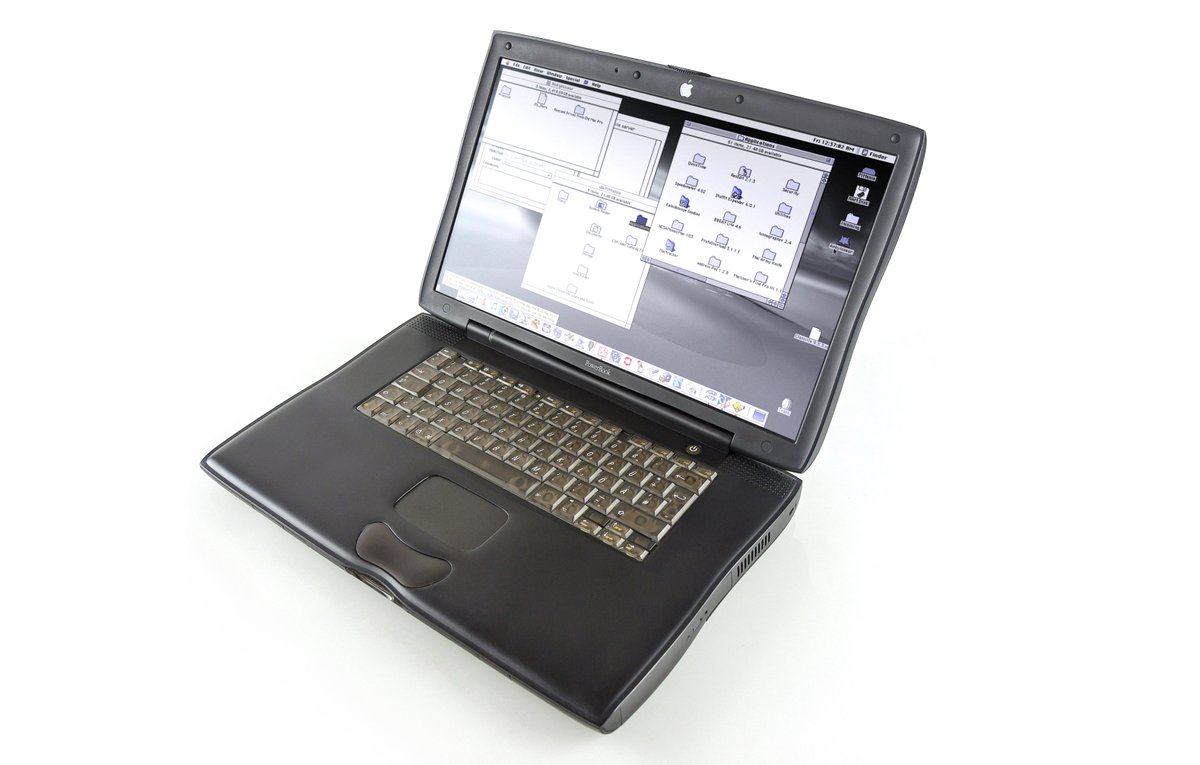 PowerBook G3 17” · Source
PowerBook G3 17” · Source
You know that this was planned at some point, before Apple realized titanium cannot be trusted:
 12” Titanium PowerBook · Source
12” Titanium PowerBook · Source
You know there was at least one meeting in the history of Apple that integration with VHS was discussed:
 The Colour Classic V, also known as the Colour Classic TV, also known as the Colour Classic VHS. · Source
The Colour Classic V, also known as the Colour Classic TV, also known as the Colour Classic VHS. · Source
You know Apple must have discussed using Zip disks as software delivery medium:
 Mac system software from non-floppy-but-zip land · Source
Mac system software from non-floppy-but-zip land · Source
(Although perhaps not necessarily software on vinyl.)
 While the Seventeenth Anniversary Macintosh was a highly anticipated machine just before release, afterwards consumer interest was restricted to dedicated collectors when confronted by 12” vinyl install media · Source
While the Seventeenth Anniversary Macintosh was a highly anticipated machine just before release, afterwards consumer interest was restricted to dedicated collectors when confronted by 12” vinyl install media · Source
There must have been a layout like this sketched out – or built! – somewhere:

And you know that some people wanted Apple Adjustable – that one sole Apple “ergonomic” keyboard that disappeared from the market so quickly – to be so much more.
 Apple Adjustable Keyboard zen garden edition · Source
Apple Adjustable Keyboard zen garden edition · Source
⌘
Which brings us to keyboards. Sibera spends a lot of time imagining alternate keyboards, too. Here are some of my favorites.
This is Apple IIGS with… a built-in keyboard:
 Apple IIGS · Source
Apple IIGS · Source
This pretty render reimagines the Apple Extended using the older Snow White visual language from frogdesign:
This is another variant of this language, this time attached to an extreme version of the aborted Apple Jonathan project:
 Started with a bang getting this complete working Apple Jonathan system. · Source
Started with a bang getting this complete working Apple Jonathan system. · Source
In the land of keyboards, you can spend entire weeks exploring various “what if”s, too. What if our love for bezels survived into this decade?
 Apple Extended Keyboard III · Source
Apple Extended Keyboard III · Source
Or what if it had disappeared much earlier?
 Apple De-extended Keyboard II · Source
Apple De-extended Keyboard II · Source
What if the Apple Adjustable made it into the notebook era? (There are only two split keyboards I know of that appeared on notebooks – one was a relatively unpopular laptop made by Samsung, and one was a prototype. Both are in the book.)
 Apple Adjustable PowerBook · Source
Apple Adjustable PowerBook · Source
What if Commodore 64 survived long enough to surrender itself to the traditional Model M layout, like seemingly everyone else in the 1990s?
 Commodore 64 Extended Keyboard II · Source
Commodore 64 Extended Keyboard II · Source
What if Apple Lisa?
 Wiide Liisa · Source
Wiide Liisa · Source
What if Johnny Ive stopped exploring and the eMate arrived using the stale PowerBook design language – rather than what became the stepping stone on the way to the influential iMac?
 eMate 100 · Source
eMate 100 · Source
⌘
Here too, jokes accidentally or intuitively veer very close to reality.
Apple Hextended and ADB QuickBinary ideas were almost exactly the keyboards of early computers.
 Apple Hextended Keyboard · Source
Apple Hextended Keyboard · Source
 Apple ADB QuickBinary Keypad · Source
Apple ADB QuickBinary Keypad · Source
“Apple Overextended Keyboard II” seems funny…
 Apple Overextended Keyboard II · Source
Apple Overextended Keyboard II · Source
…although on the other side of the Mac/PC divide we actually got something like this – the Bigfoot variant of the classic Model F.
There was a moment, a few years ago, where these seemed inevitable…
 Apple Magic Keyboard and Trackpad combo · Source
Apple Magic Keyboard and Trackpad combo · Source
 MacBook Pro with TouchBar-only keyboard. Six touchbars; all screen, all the time · Source
MacBook Pro with TouchBar-only keyboard. Six touchbars; all screen, all the time · Source
…and once again, products like this existed on the PC side.
This feels like a joke, but versions of keyboards like these exist for left-handed people:
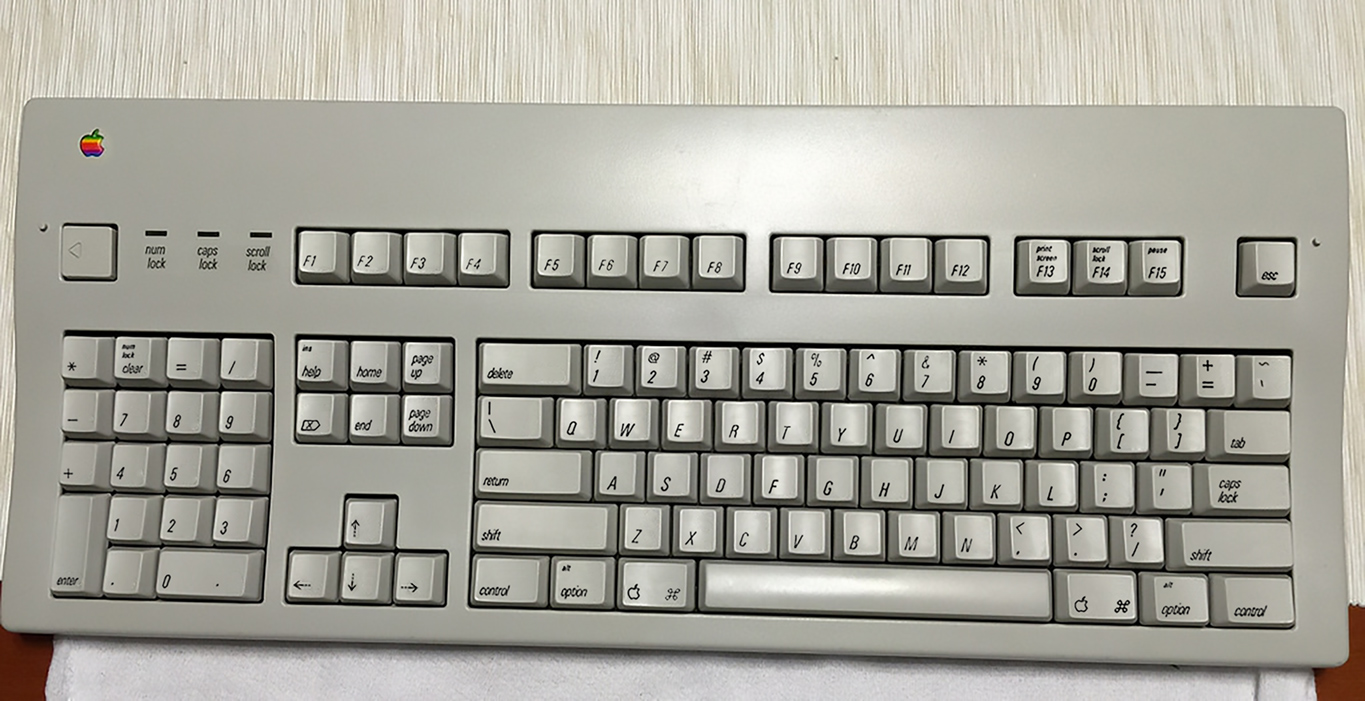 Apple Tenexded Beycoard II · Source
Apple Tenexded Beycoard II · Source
This…
 Innovative keyboard using fewer keys. Pairs of keys are joined in a single rocker switch to provide approximate functionality and fewer working parts. · Source
Innovative keyboard using fewer keys. Pairs of keys are joined in a single rocker switch to provide approximate functionality and fewer working parts. · Source
…this happened! For real!!!
And this exploration of lowercase and uppercase letters coexisting happened on early typewriters as well, if not in this particular configuration.
 An elegant solution to the problem of the shift key. · Source
An elegant solution to the problem of the shift key. · Source
If the above was an accidental nod toward the Shift Wars of the 1880s, other mock-ups point to other history battles, like the unresolved battle of the two numeric keypad orientations:
 The Apple Corrected Extended Keyboard resolves the long-standing discord between number key orientiation on phones & keyboards · Source
The Apple Corrected Extended Keyboard resolves the long-standing discord between number key orientiation on phones & keyboards · Source
I have spreads in my books with arrow key layouts more weird than this!

It took us a while to figure out where to put the trackpad on smaller machines.
 Macintosh PowerBook G3 DuoWide · Source
Macintosh PowerBook G3 DuoWide · Source
And, once IBM added F11 and F12 to the Model M and the whole keyboard universe moved from ten to twelve function keys, there were extra third-party appendages you could buy and bolt onto your older keyboard to get them. They didn’t look as cursed, of course. Or did they?

⌘
What does this all have to do with my book?
On the surface, nothing at all. None of Sibera’s work is in the book – the only “hypotheticals” and prototypes I put in Shift Happens are of “real” machines and prototypes.
But then, my book has two currents. The main line of history with inventions that ended up shaping the keyboards of today – the Remington, the Underwood, the Selectric, the Model M, the iPhone – is always surrounded by the fringes, the in-betweeners, the one-offs. It’s so much fun looking at the stuff that didn’t make it, and ponder why. Because it is not always because the idea itself was bad.
Sibera’s work – that collection almost always anachronistic, and sometimes even anarchic – seems to be a love letter to those, even if by accident. Perhaps the idea here is simple: sometimes you have to see what hasn’t happened to learn more about the things that have.
I enjoy seeing them so much. The images I put in this newsletter are just a fraction of Sibera’s output. I hope one day this will be collated more properly – in a gallery, perhaps, or a book itself. They’re worth inspection and introspection.
⌘
But maybe I don’t have to overanalyze this, and just… I don’t know. Enjoy the ride?
Because this, this is fun. Wouldn’t you buy this in an instant, no matter how impractical it seems?
 Macintosh PowerBook G3 with matching PowerPod 3 external screen, storage, keypad, and portable music player. · Source
Macintosh PowerBook G3 with matching PowerPod 3 external screen, storage, keypad, and portable music player. · Source
 PowerBook 540c with PowerPod
· Source
PowerBook 540c with PowerPod
· Source
(Sibera even made a fake advertisement for it.)

This is just goofy:

This is… logical, I guess?
 ThinkPad, with multi touch · Source
ThinkPad, with multi touch · Source
I actually spent many hours searching for something like this that I was certain must have existed:
 Seiko IRC digital Pro · Source
Seiko IRC digital Pro · Source
It didn’t. Neither did this, although – just imagine!
 Silicon Graphics Indy and matching display · Source
Silicon Graphics Indy and matching display · Source
This is just funny:
So is this, in a very different way:
 Before the ubiquity of CD-ROM drives, early PCs required the use of an adaptor to allow the use of CDs through a regular floppy drive. These were especially popular for laptop users out on the road well into the late 90s. · Source
Before the ubiquity of CD-ROM drives, early PCs required the use of an adaptor to allow the use of CDs through a regular floppy drive. These were especially popular for laptop users out on the road well into the late 90s. · Source
This – a tiny CRT in an Esc key – I’d die to have.

And don’t get me started on all the extremely desirable mini versions of old computers – a retro Mac, an old NeXT, a vintage PS/2 IBM.
 The very loved first Macintosh mini · Source
The very loved first Macintosh mini · Source
 The NeXTstation mini featured a 40Mhz 68040 processor, internal 750 MB hard drive, 2.88MB Floppy and 230MB MO drive in a small magnesium case. Source
The NeXTstation mini featured a 40Mhz 68040 processor, internal 750 MB hard drive, 2.88MB Floppy and 230MB MO drive in a small magnesium case. Source
 IBM PS/2 Mini · Source
IBM PS/2 Mini · Source
Some part of my heart aches that these will never see the light of day.
Or, maybe? I found at least two examples of people actually building the cursed inventions Sibera only imagined. One is the “keyboard computer” Performa 110, kit bashed from a few other computers.
The other? This recent idea…
 Despite the 3.5” Magneto-Optical disk’s many advantages - Much larger, more reliable and resilient storage, a bright backlight, and a high-resolution active matrix colour screen - it still failed to make inroads against sales of the older ubiquitous 3.5” floppy disk. · Source
Despite the 3.5” Magneto-Optical disk’s many advantages - Much larger, more reliable and resilient storage, a bright backlight, and a high-resolution active matrix colour screen - it still failed to make inroads against sales of the older ubiquitous 3.5” floppy disk. · Source
…3D printed and made real by someone else:
So, let’s all hope! If our future has to be cursed, I want it to be cursed by more of Sibera’s mock-ups becoming real.
